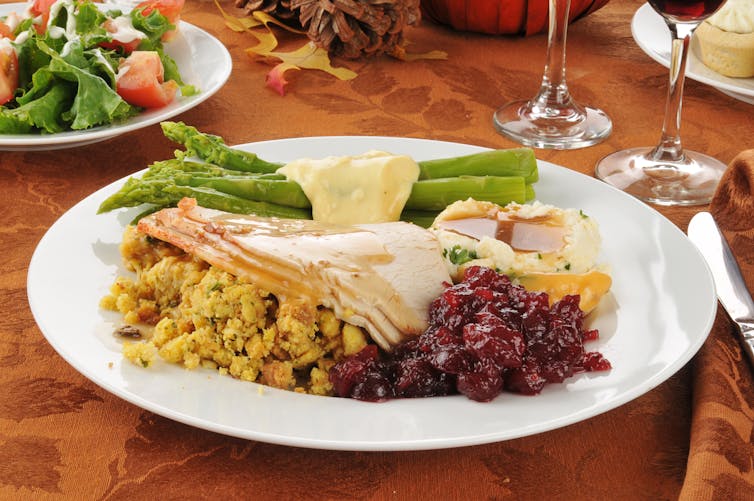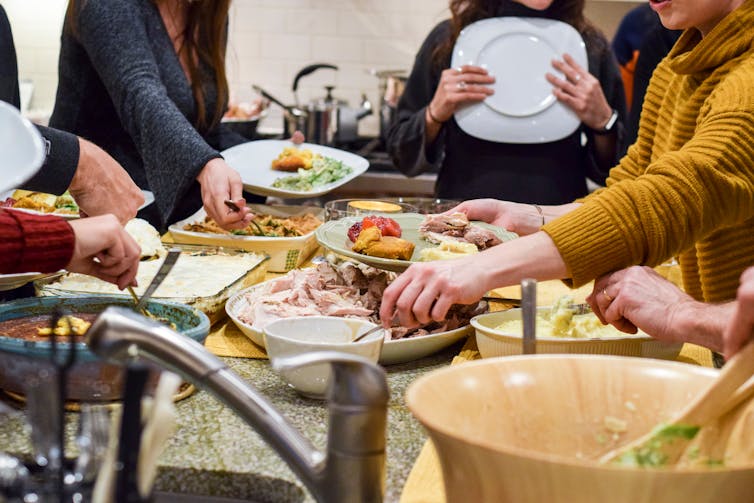, PhD Student, Social Anthropology, �����Ի���, Director, Agri-Food Analytics Lab, Professor in Food Distribution and Policy,
The holiday season is fast approaching and Canadians of all backgrounds are gearing up to celebrate by sharing food with loved ones. For many, like turkey are front and centre, with vegetable dishes playing supporting roles.
But as the demographic makeup of Canada changes, so too does the Christmas table, with many choosing plant-based alternatives or creating a with traditional meals from home countries.
Regardless of one’s background, many of us tend to indulge — or indeed overindulge — during the holidays. This year, however, indulging in holiday foods will be an expensive proposition.
For the past few years, our Agri-food Analytics Lab at AV���ֲ� has been researching food prices. The cost of food has reached record highs, shaped by a number of factors, including adverse weather affecting growing and harvests, geopolitical events driving up the cost of energy and labour disputes disrupting supply chains.
Since the advent of the pandemic, . , with one-third of those relying on food banks being children. The high cost of living has put many families in a precarious position, causing some to recalibrate their holiday traditions.
Costs of a holiday dinner
Many Canadians are worried about the cost of hosting family dinners over the holidays this year. The traditional Canadian holiday meal is typically centred around turkey with side vegetables or meat pies, followed by a dessert of some kind.
However, this year, prices are higher than they have been in the past. According to data we’ve gathered at our lab, a traditional Christmas meal for a group of four to six people will cost consumers approximately $104.85 on average.
Although to normal, the food items typically associated with the holidays are still fairly high.

Turkey is up five per cent, potatoes are up 6.6 per cent and carrots are up 12.8 per cent. The per unit costs of a full turkey dinner with gravy and rolls, fruitcake and eggnog is approximately $9.77 per person: arguably a reasonable price to overindulge with those you love.
Celebrations of the holidays are more joyful when shared with loved ones. Still, the upfront cost of feeding a table full of people may be too much for the average Canadian to bear this year, and holding on to family traditions may create undue stress and anxiety.
Share the stress of cooking
The great thing about traditions is that we can establish new ones. Because of high food prices, we expect to see many Canadians moving away from turkey and stuffing, choosing lower cost alternatives to share with family and friends. Ham for example, will reduce the cost of the meal to roughly $7.79 on average.
A simple Google search will net you thousands of dish ideas for both show-stopping side dishes and comfortable favourites. Ultimately, it matters less what’s on the table than who is seated around it.
But there are ways of cutting costs this Christmas that don’t require sacrificing our most beloved meal items. The holidays are a chance to share meal costs without putting too much financial or social pressure on hosts or guests. Potlucks can be a fun conversation starter for new guests, an introduction to new and delicious foods or the start of a tradition that celebrates new and chosen family members.

Holiday traditions , togetherness and connection. But this doesn’t mean traditions can’t change over time. bring their own customs and rituals, resulting in .
The potential for cross-cultural exchange within children’s schools or new romantic or working relationships could result in a blend of new and old traditions, offering a chance to cut back on financial costs, and ease the stress of getting holiday meal traditions just right.
Instead, this year, new traditions could infuse the holidays with fresh meaning. The holidays remind us that we have the power to choose how we celebrate, freeing ourselves from the social pressure to maintain traditions that may no longer bring joy or fit our budgets, whether it involves turkey or not.![]()
This article is republished from under a Creative Commons license. Read the .

